How to Design a Successful Fundraiser
Spending money on fundraising with the hope that you will end the year with more money than you started with feels risky, but it is necessary for the financial health of your nonprofit. It is also an opportunity to connect to your audience and deepen their connection to your organization in a fun environment. In this case study, I will go over the steps to plan, design, and implement an in-person fundraising event.
“My name is Carlos Fernandez. I read on your website that you resettled 43 Cuban children in 1962—I am one of those children…I am hoping to connect to the other children who came to Nashville when we did.”
Catholic Charities, Diocese of Nashville wanted to celebrate their 60th anniversary. The inspiration for the event arrived via the voicemail above more than a year before. Only one month after its founding, Catholic Charities, Diocese of Nashville was called upon to find temporary foster families for 43 children fleeing the communist revolution in Cuba. Soon after, Catholic Charities quickly expanded beyond refugee resettlement to help those who were vulnerable in the community. Their acts of service have had ripple effects throughout Middle Tennessee and their 60th anniversary was a chance to celebrate and share those stories. When the planning process began, the future of the pandemic was uncertain. Will attendees want/need to wear masks? Should there be a virtual backup plan? How do we entice our audience when there is so much competition for their time and attention? The key to a successful fundraiser (event or otherwise) is connecting to your audience.
Putting the Fun in Fundraising
Fundraiser Goals
Some questions to ask internally before hiring a marketing and design team:
What is your event fundraising goal? Your goal should be measurable and attainable, but still a slight stretch.
How will it support your values and mission? (i.e. $75,000 will fund mental health counseling for 100 families next year.) Being able to articulate how the money benefits your organization will help you connect to donors.
How do you plan to achieve your goal? Sponsorships, corporate partnerships, high-level individual donations, auction, new donors, recurring donations? You can look at past events to get an idea of what level of contributions to expect.
Decide if you want a virtual or in-person event, and start to project expenses accordingly (staff costs, web portal, venue, catering, decorations, entertainment, design, printing, mailing, advertising, photography, etc) If you are aiming for $100,000 in donations, expect to spend between $24,000–$35,000. According to Charity Watch, a good expense ratio to aim for is 35 percent. This means that for every $100 raised, your organization should have paid $35 or less.
El Festival de Esperanza sponsorship packet.
Previously, Catholic Charities’ annual fundraiser, Pathways to Possibilities, was a casual breakfast meet and greet featuring past clients and updates on their service goals for the next year. It was funded through sponsorships and individual donations. To celebrate their 60th anniversary, they wanted to host a Cuban-themed evening affair with live music and catering. To pull it off, they needed to reach a larger audience than in the past, and fund it through ticket sales, sponsorships, and individual donations. Once you know your goal and have a general idea of how you might achieve it, it is time to bring in those with the vision to bring it to life.
Connecting with Your Ideal Audience
Storytelling will make it easier for your audience to understand and feel connected to your mission. Weave a story that intertwines your organization’s values with your fundraising goal. Speak from the heart of your brand and your audience will respond. Catholic Charities of Nashville was founded when families were needed to temporarily host Cuban children in 1962, as part of Operation Pedro Pan. 43 children were flown to Nashville and stayed with local Catholic families until they could be reunited with their parents. In 2022, Catholic Charities sent a videographer/photographer down to Miami to interview three brothers that were part of the original group sent to Nashville. So began a then-and-now story of the ripple effects of their acts of service over the past 60 years. In honor of their founding, they named 2022’s Pathway to Possibilities fundraiser El Festival of Esperanza (Festival of Hope). Once you have a story, then you need to spread it far and wide in as many formats as possible.
Branding Your Event
Branding your event is just as important as branding your organization. Using consistent design elements (wordmark/images/colors/fonts) will create recognition and help you stand out when communicating through different media channels. Catholic Charities of Nashville had a little over 4 months to execute their vision. With a name in place, I designed a wordmark and invitation that would be sent to donors and friends. Your invitation can be high-end—with diecuts and metallic embossing—or it can be as simple as an email invite, depending on the event and your audience. Catholic Charities mailed a folded invite with a donation/RSVP card and return envelope, and also sent a digital version more widely afterward.
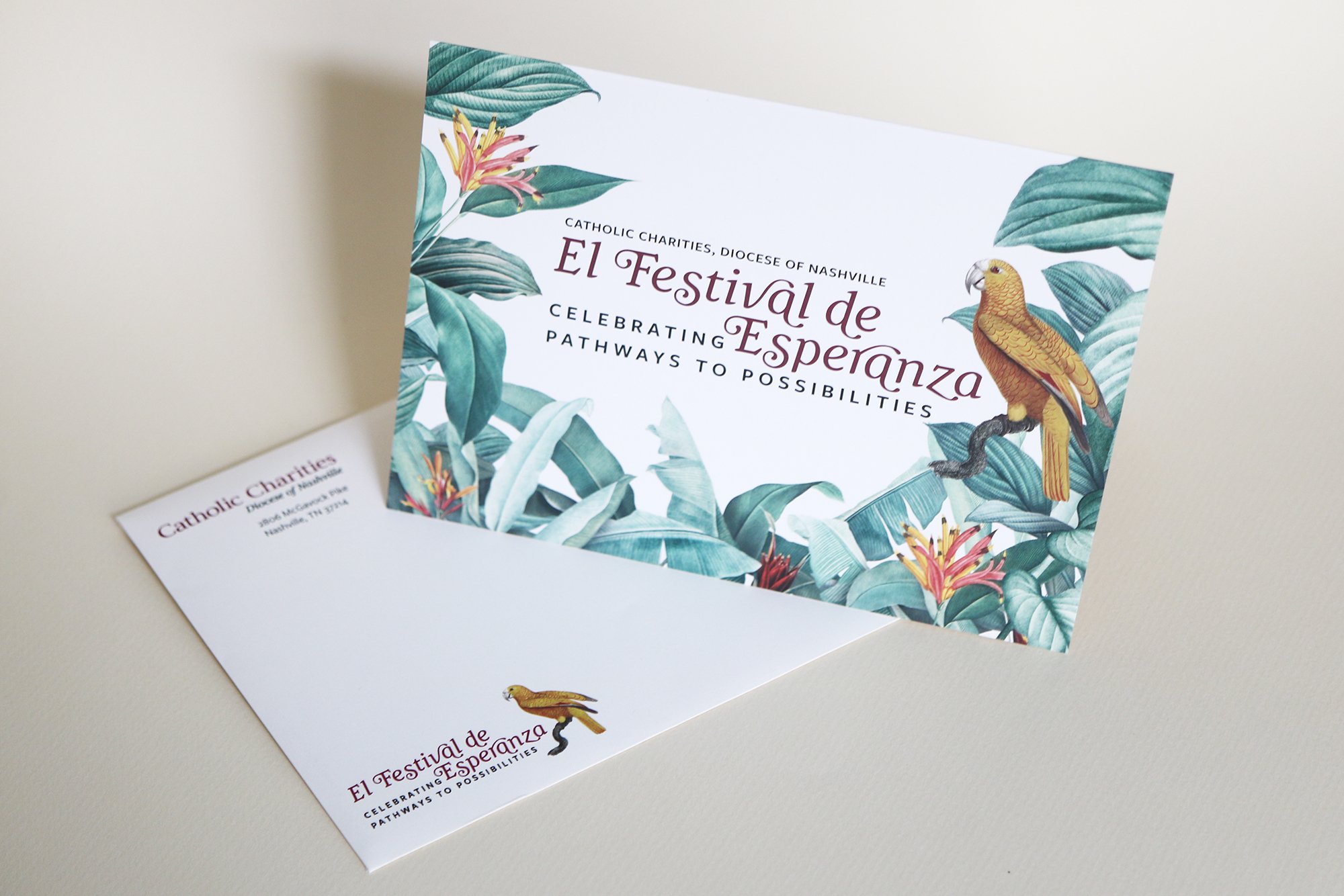
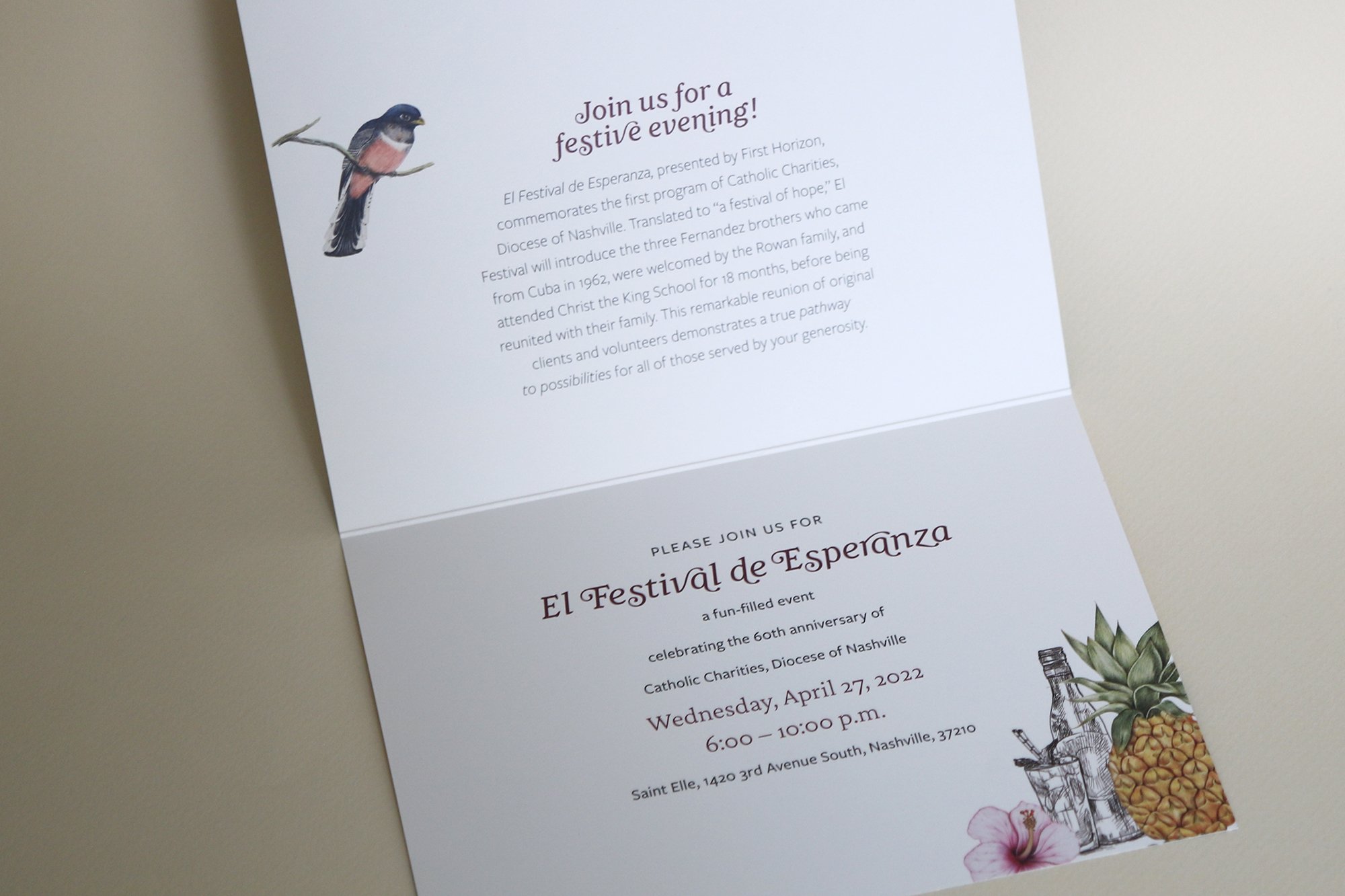
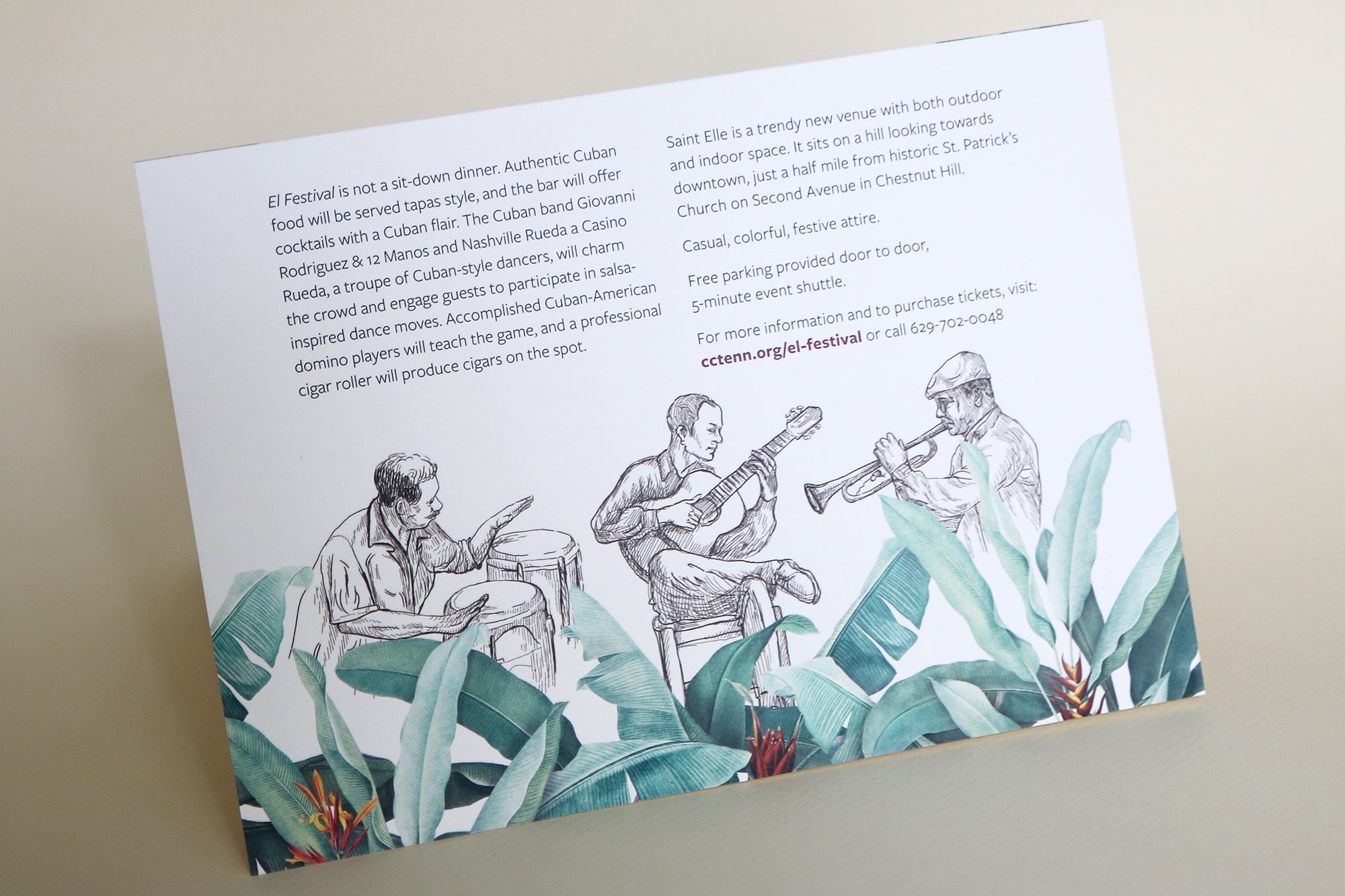
Their next step was to secure sponsorships and execute an advertising plan that included distributing spanish and english flyers to local churches, local ads, direct mail, social media, email, and web. The most ambitious part of the plan was a 52-page book to share their history and educate attendees about their mission, values, and areas of service, sponsored in part by individual donations honoring past clients.
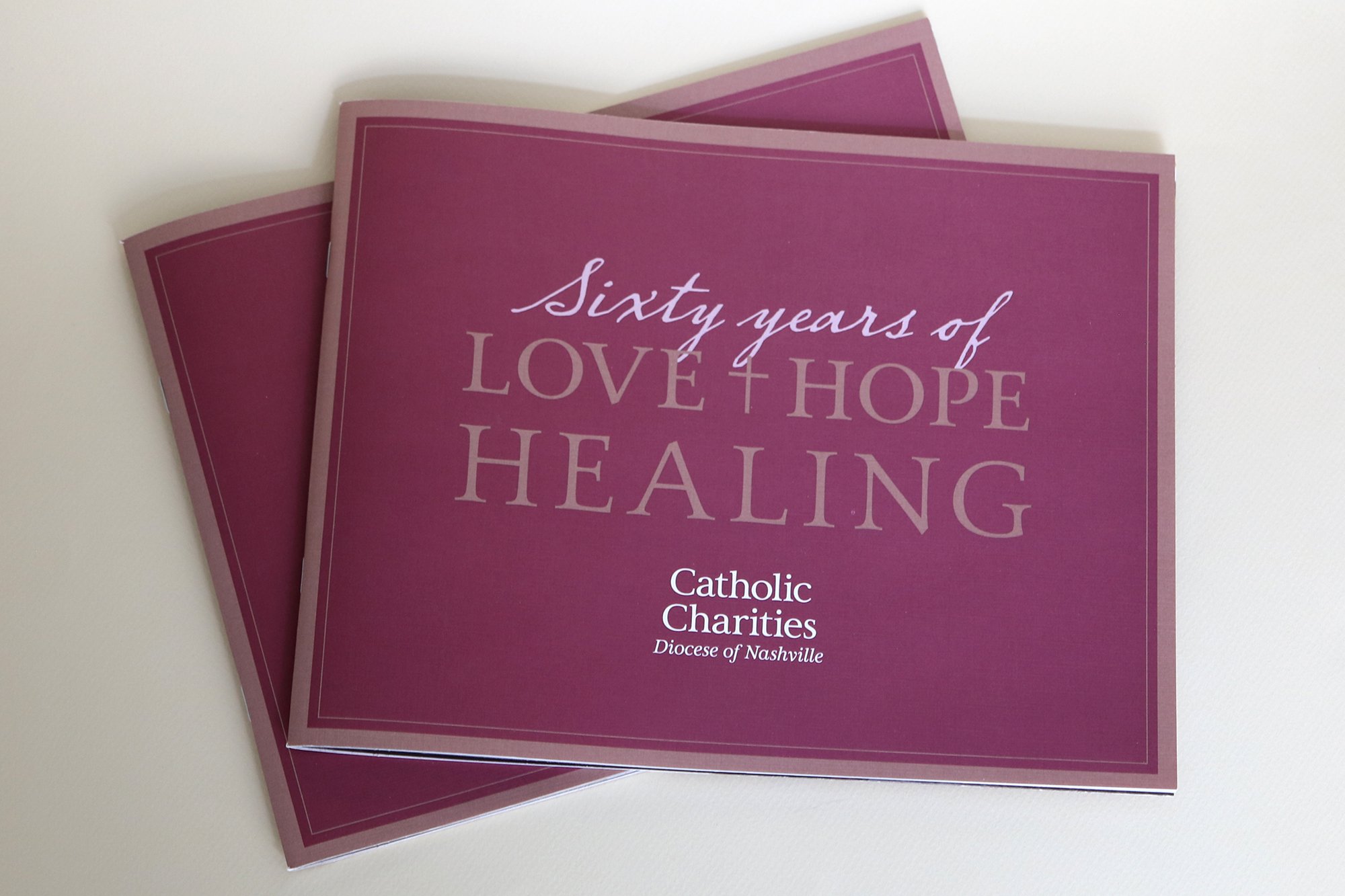
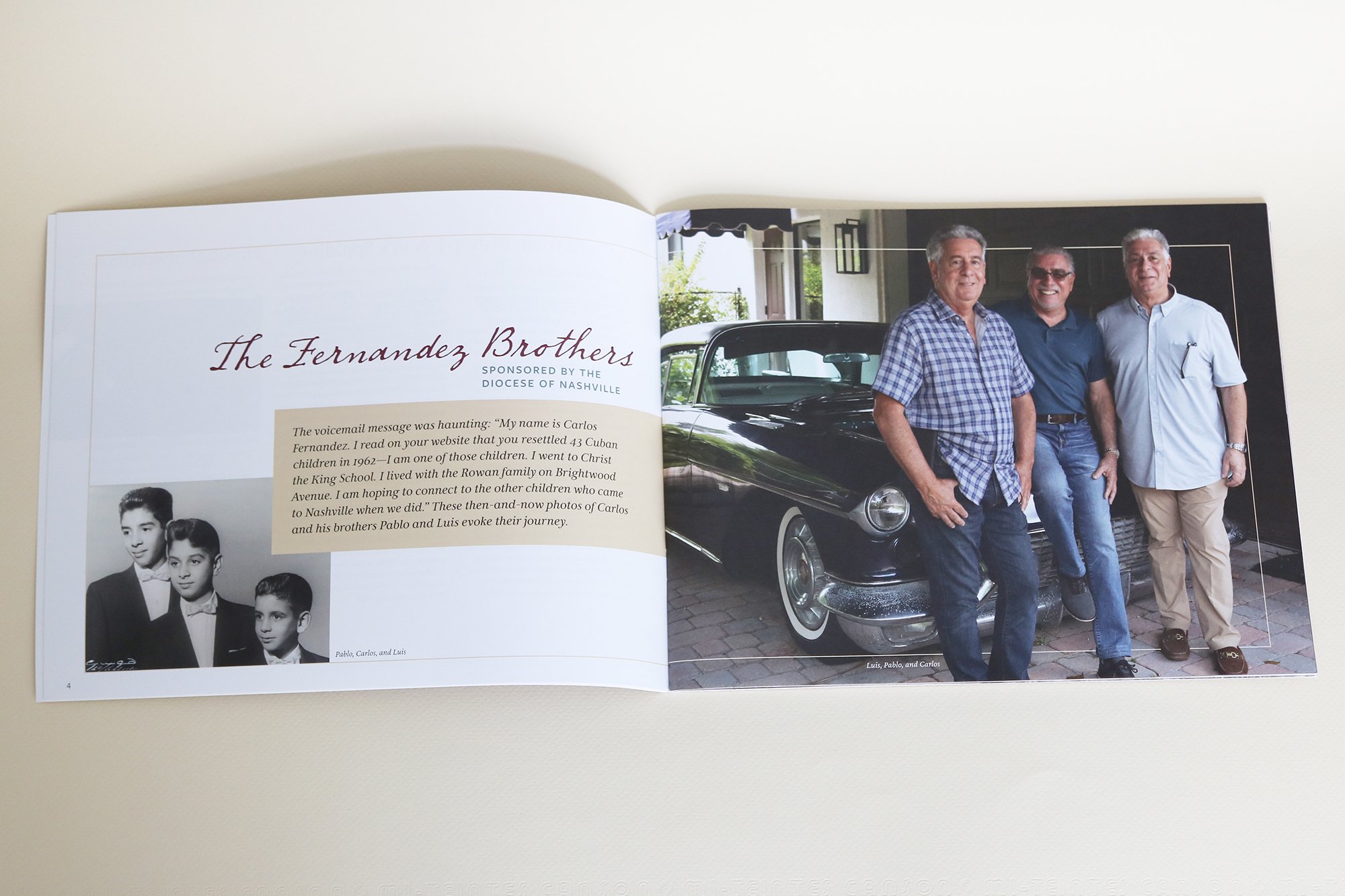
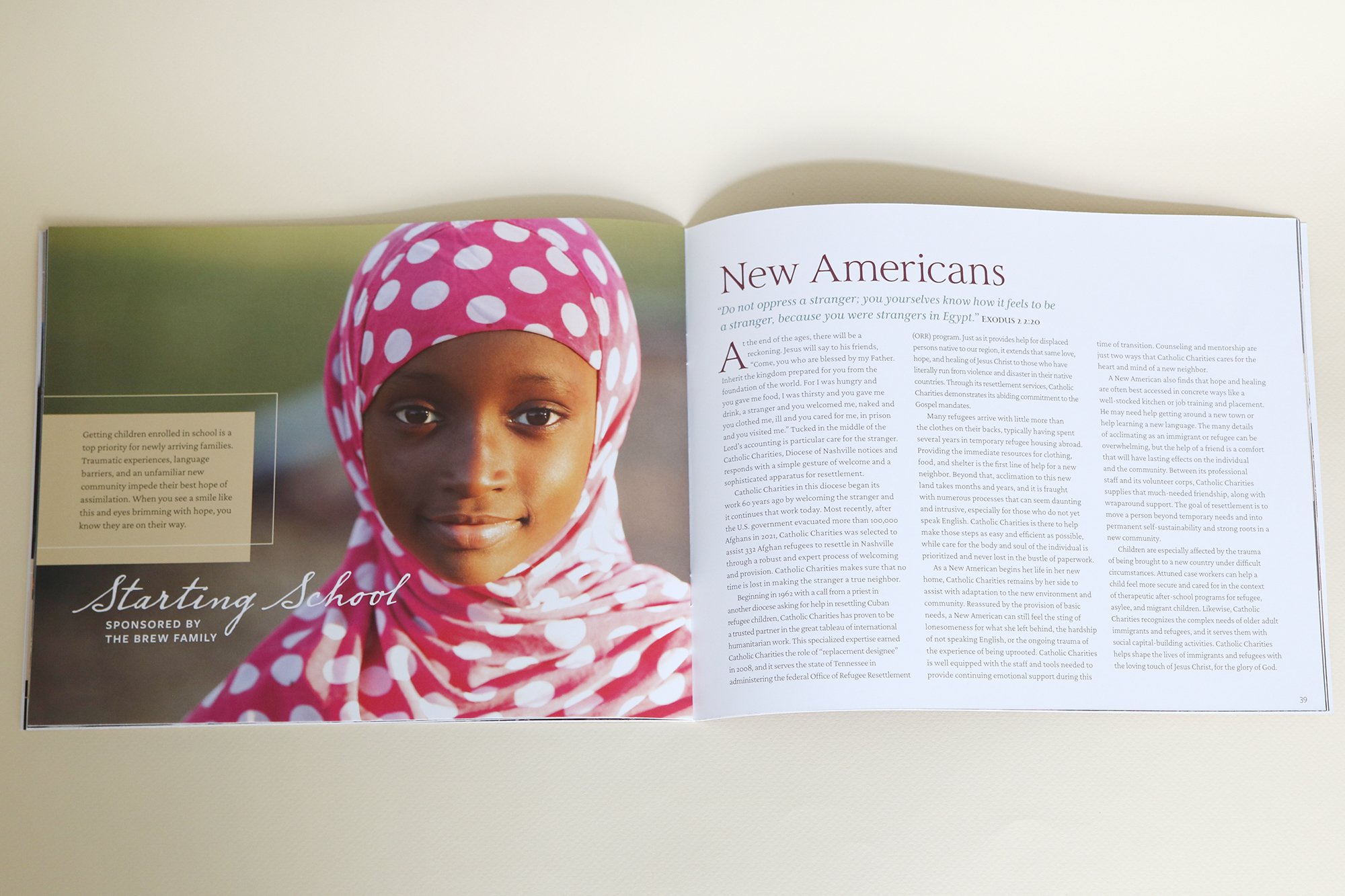
Keys to a successful fundraiser:
Remember your end goal and focus on the best way to achieve it (large sponsorships/auction items/individual donations). Options to help communicate with potential sponsors include printable and interactive PDFs or custom powerpoint presentations, which can be helpful during sitdowns with a prospect.
Simultaneously start spreading the word about your fundraiser through multiple channels, such as your website, radio, social media, video teasers, peer-to-peer networks, email, direct mail, advertising, billboards, flyers, and posters.
Post-pandemic, QR codes have become more accepted, and can be a great way to immediately connect a prospect to your ticket or donation page. Consider adding them to your flyers and direct mail postcards, or even on placards at the event itself.
Once the media machine has been activated and your main sponsorships secured, it is time to turn your attention to the event itself.
Designing Your Event
With branding in place, you have a good place to start in regards to a color scheme and theme for your event. Catholic Charities had secured an event venue downtown (venues need to be booked 8-12 months in advance) as well as a Cuban caterer, Cuban band, and dance group (caterers should be secured as soon as you have a venue, and the best entertainers’ schedules fill up quickly). Catholic Charities wanted several sponsored activities on-site, such as cigar rolling, chess, signature Cuban cocktails, and a vintage car photo booth. With sponsors secured, I began designing signage for each activity as well as branded cigar bands. Other needs to remember are a program of events, reserved table signs, menu, and parking signage. I also designed a silent Powerpoint that looped during the event featuring the event program, sponsors, and an overview of Catholic Charities’ areas of service and relevant past clients.
One caveat to keep in mind is printers ideally need 2 weeks to get your items finished, and if you order branded tablecloths, tote bags, or other items, they may need even more lead time. Once the event details have been taken care of, attention can move to event flow and fun!
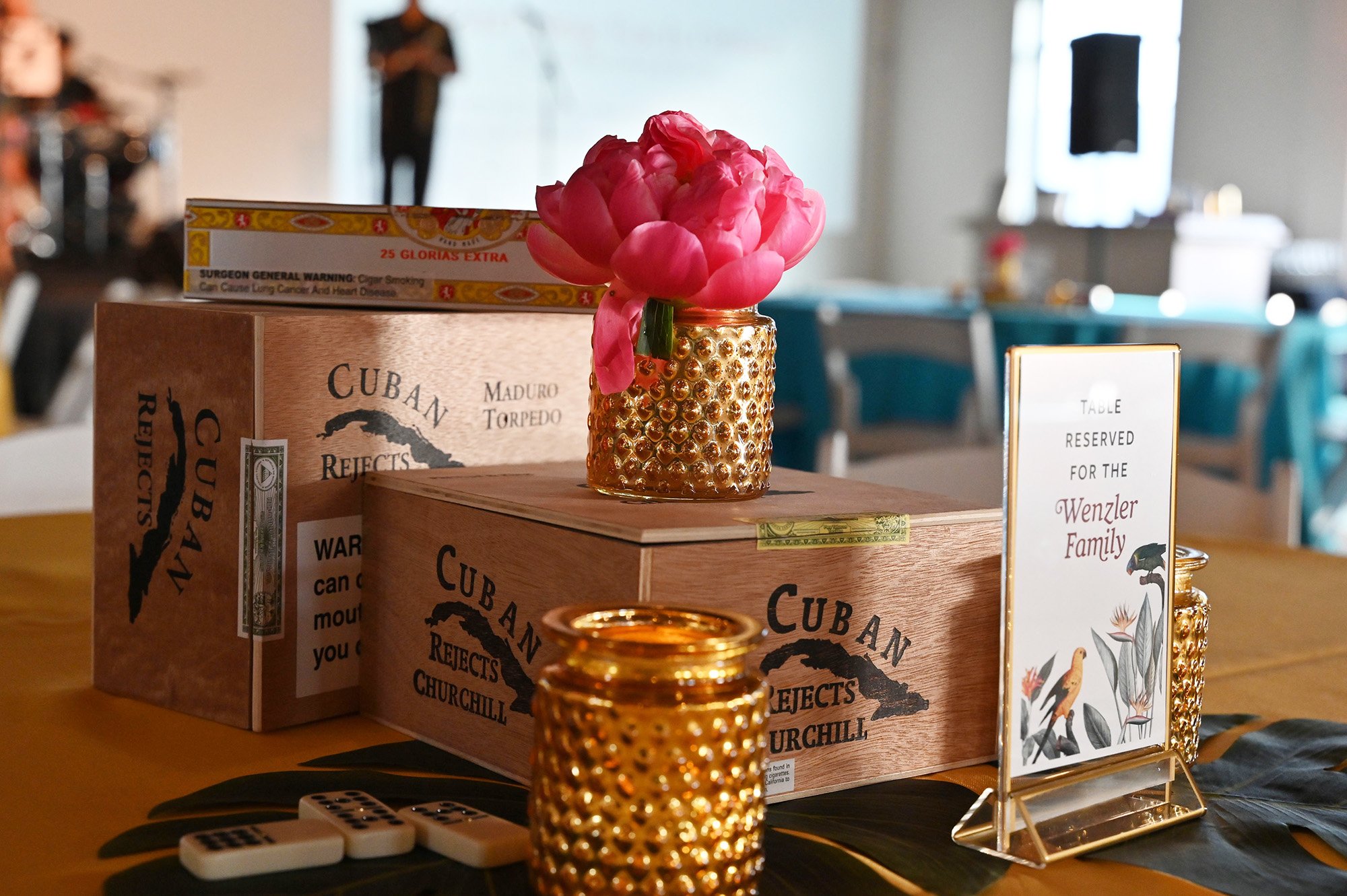



Fundraiser Fun
How will your event unfold, and when and how will you interact with donors and sponsors? Think of your fundraiser a bit like a reception: mingling as guests arrive, introduction to event timeline, meal (if there is one), speech or video about your organization and how money raised will benefit your mission, shout-outs to sponsors, entertainment, and finale thank you. Remember to keep the event moving and don’t linger too long at any point. Ideally, your guests will leave the event feeling good, with something to remember you by and a call to action—a brochure, donation envelope, or other thank you.

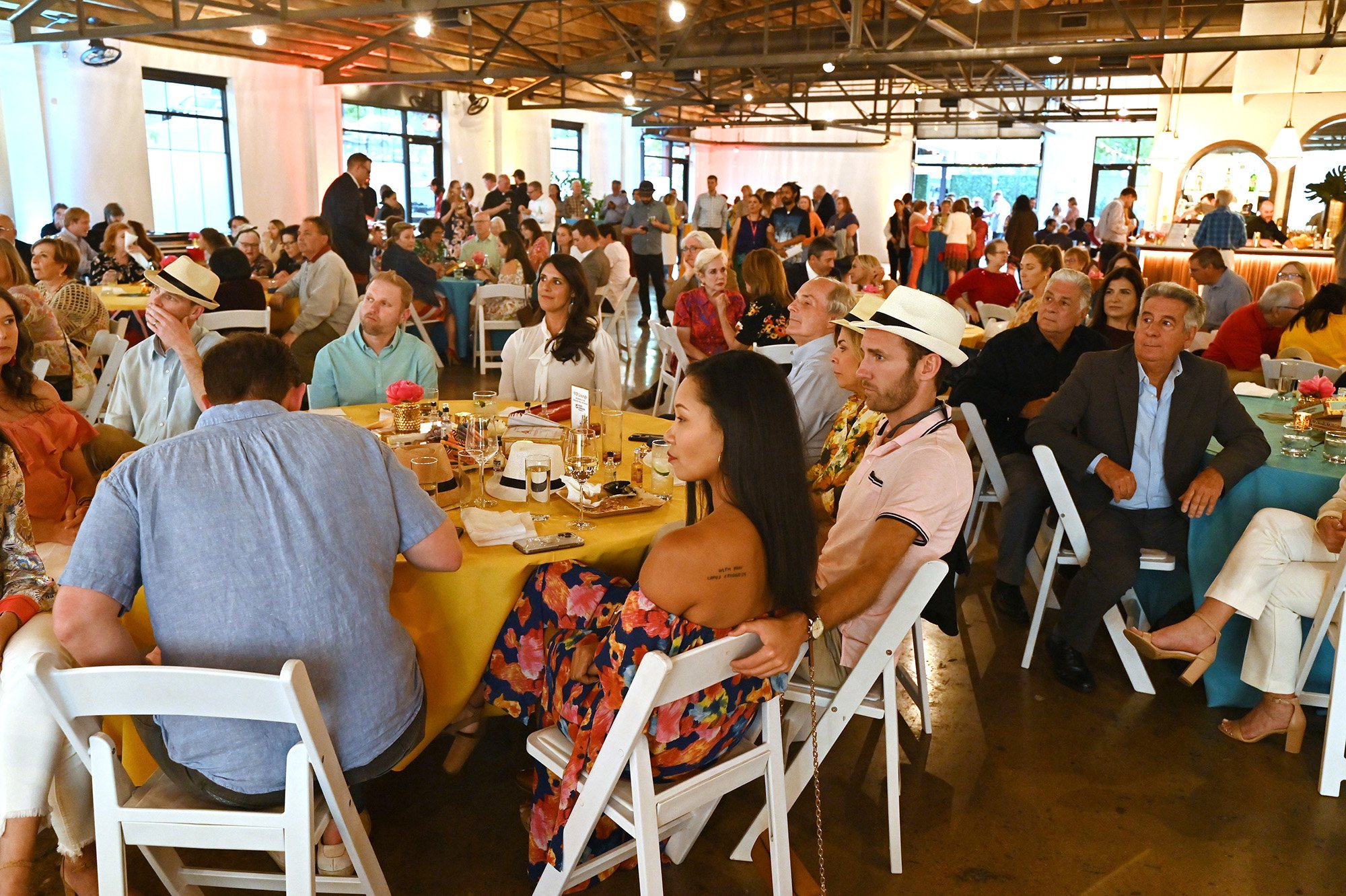
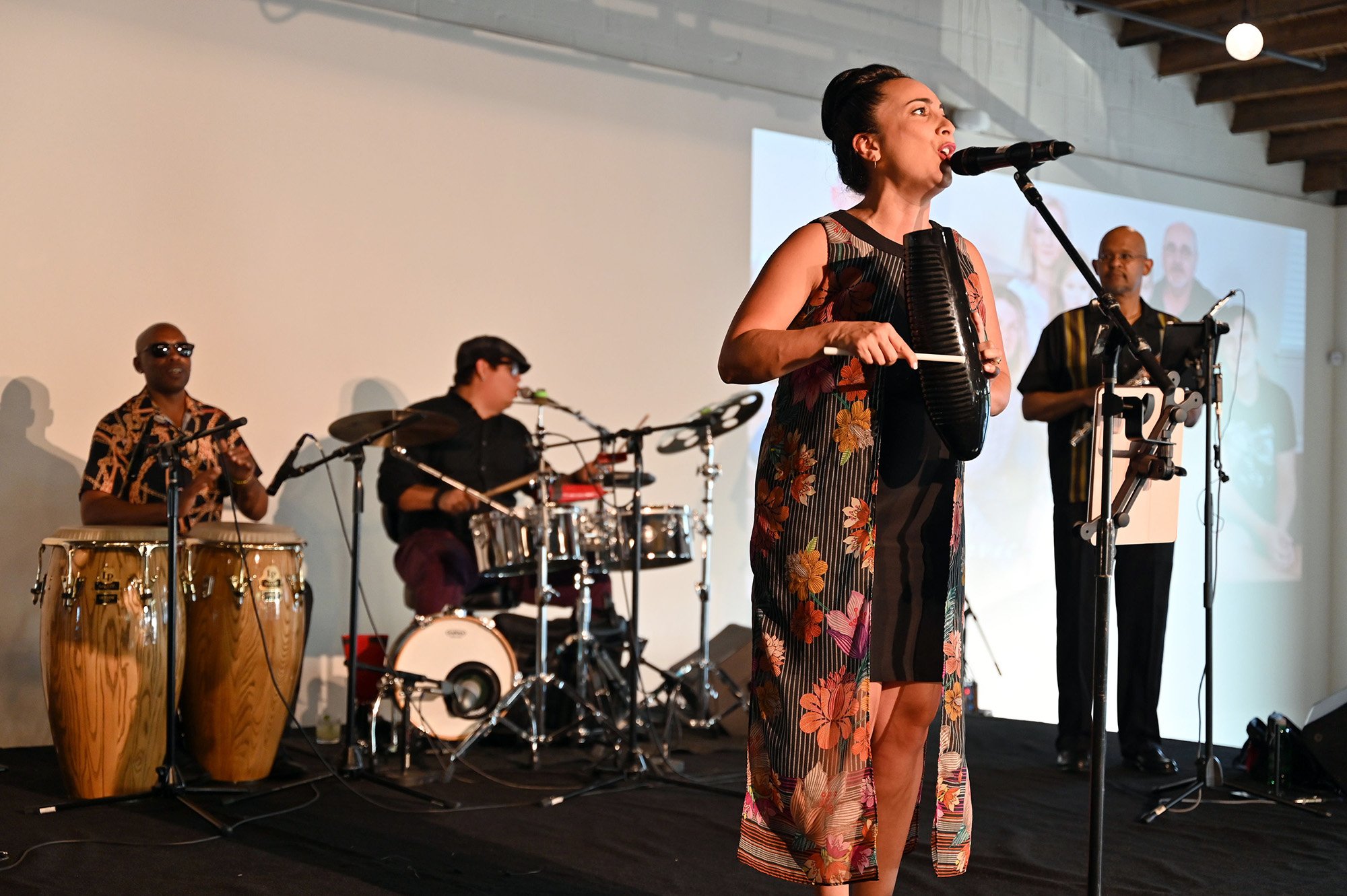
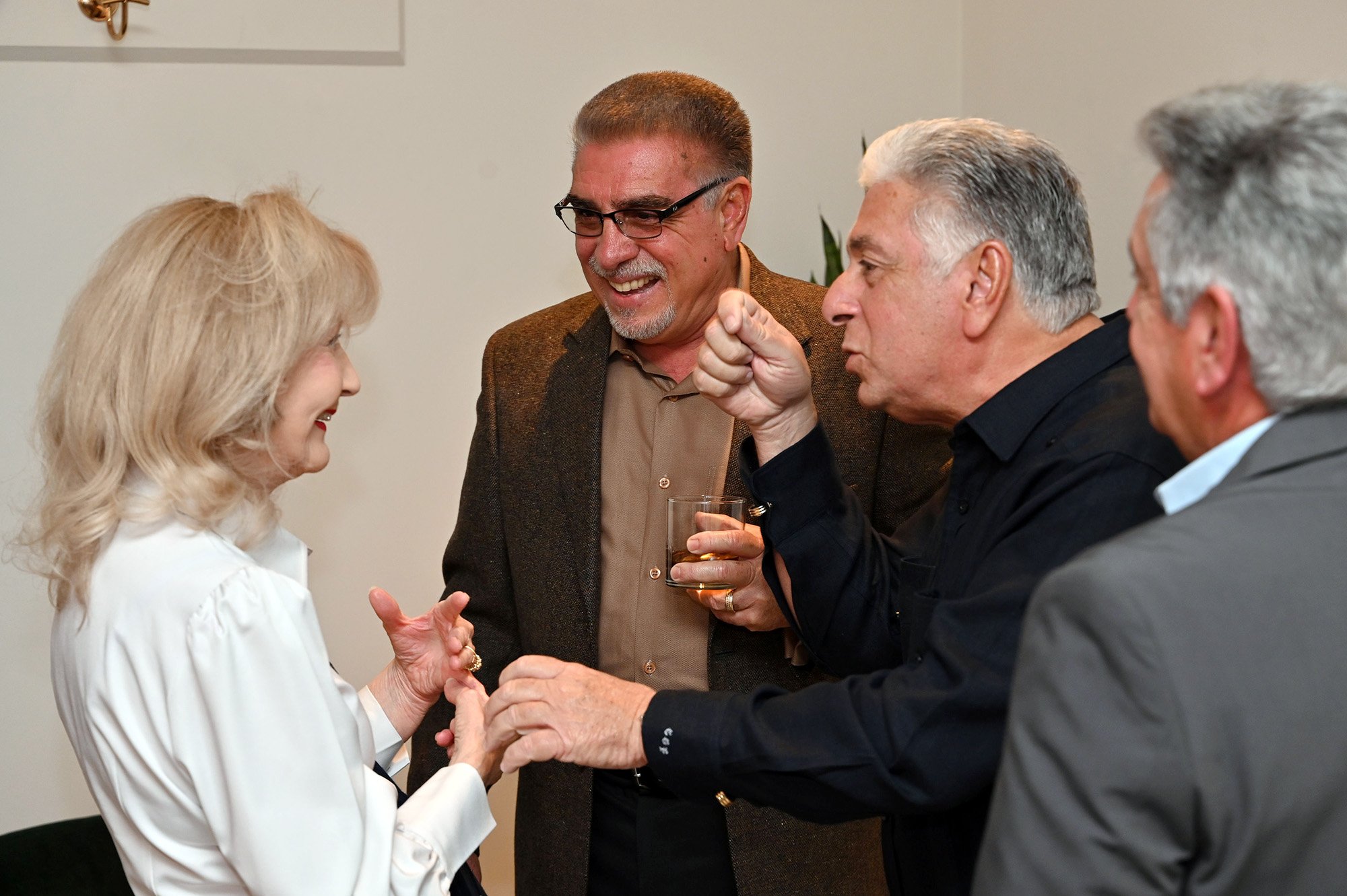

El Festival de Esperanza had appetizers and cocktails before dinner, as well as freshly rolled cigars, photo booth with vintage car, and music. During dinner, the executive director introduced the three Cuban brothers that had arrived—alone—in Nashville 60 years prior, and members of the family that had hosted them. This led into the Operation Pedro Pan video commissioned to share their story and Catholic Charities’ supportive role. At the end of the evening, attendees were given a copy of the book Sixty Years of Love, Hope, and Healing with a donation envelope tucked inside. The book featured the history of Catholic Charities, Diocese of Nashville, short profiles and portraits of past and current clients, and how the organization serves the communities of Middle Tennessee. The video commissioned for the event lives online as a testament to the ripple effects of community service and serves as another way for their audience to connect with the organization.
“The design concept and execution elevated the event and made it feel special and unique. While annual events can often feel “same old-same old” this one had great energy and personality, making it memorable. ”
Closing Thoughts: How to Plan a Charity Event
Fundraisers are a big undertaking, but with proper planning and a team ready to implement them, they can be an important part of your operating budget. Make sure you have an attainable goal that aligns with your organziation’s mission, and the bandwidth to plan a noteworthy event. Use storytelling to connect with your ideal audience, making sure you share how donations will be used and how they will benefit the community you serve. Involve partners who can brand your event and market it consistently through multiple channels. Carry through your fundraiser branding to the event itself with attractive signage, presentations, giveaways, and leave-behinds. Finally, don’t forget to have FUN at your fundraiser—you worked hard to bring it to life!



